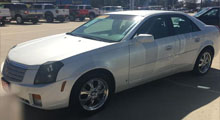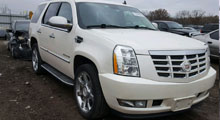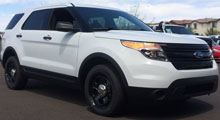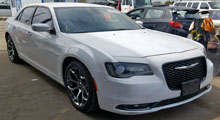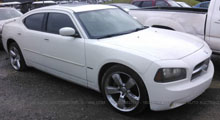The Cost Of Vehicle Ownership
Although it is common knowledge that owning a vehicle doesn’t end with the purchase price, many first-time owners have little idea of the variety of payments that will need to be made throughout the duration of their vehicle ownership. According to the US Bureau of Labor Statistics, the average other vehicle expenses aside from the purchase cost come in at around $2,800 per year, with a further $1,900 average spent on gasoline and motor oil. Here’s a breakdown of some of the main expenses for vehicle owners.
Insurance
Insurance is one of the main ongoing expenses for vehicle owners and it can also be one of the most variable. Liability insurance is mandatory in every state apart from New Hampshire, where drivers can opt out of insurance but they must deposit funds or proof of funds to cover an accident if they are at fault. Liability insurance covers the cost of repairing damages that you may cause to others and their property.
Insurance premiums and cover vary from state to state. If your vehicle is not fully paid for you will need to pay for collision cover too, this will cover damage to your vehicle from vandalism, fire, theft and accidents. Although it is recommended, if you own your vehicle outright it is not mandatory. There are also further types of vehicle insurance such as gap insurance, uninsured driver insurance, personal injury protection insurance, all with their own specific advantages in certain circumstances. You are free to choose the level of coverage you desire or you can opt for the minimum required.
As insurance is based upon many varying factors, you are strongly advised to check how much your insurance would be before purchasing a vehicle. It could help you to decide between two different models and over the duration of your vehicle ownership you could be looking at a huge potential saving.
Insurance costs vary also according to your location, which state you live in, your age and how much your annual mileage is. Extremely basic average figures for monthly insurance prices start from $80 in Maine and go up to $213 in Michigan, with an average annual cost for the whole of the United States coming in at $907.38 in 2014, according to Quadrant Information Services
While you cannot avoid paying for insurance, you can certainly control your level of coverage and it is possible to make considerable savings by comparing different companies or by grouping your home and auto insurance with the one company.
Taxes
When you purchase your vehicle, you may find that the actual price you end up paying is actually higher, in some cases around 10% higher even. So check with your dealer or seller that the price you are looking at is inclusive of sales taxes. The national US average sales tax is 5.75% of the sales price, in most states there are various other taxes and registration fees to be added on, rounding up to around 10%, although this figure varies from state to state. Once you have paid all of these, you will only have to pay a yearly registration fee once a year which can be around $100 a year, although many states have much lower fees. The cost of vehicles sales tax also varies from state to state and not every state has a car sales tax.
Financing
If you’re not paying for your vehicle upfront, you will have to bear in mind any interest you will be paying on top of the purchase price. Make sure that you add the total amount to the price of your vehicle so you can clearly see what exactly you will be paying in total. It pays to compare rates between different companies and you can also try your regular banking establishment who may offer a substantial reduction for existing customers.
Depreciation
Strictly speaking, depreciation is not a cost. It does however affect your car ownership finances as your vehicle will be losing value as time passes. Your loan, however will be for the same amount and with interest, so once you have paid for the car outright, it will no longer be worth the price that you paid for it. Of course, you have to factor in that you will have had the use of it over this time, and that is of worth in itself. However, if you count on selling it on or trading it in, you need to be aware that it will have most probably depreciated by a large amount over the term of your ownership.
Fuel
Fuel is another unavoidable expense that varies in cost from state to state. The national average is approximately $2.30 a gallon for regular unleaded gas, although prices also fluctuate depending on world markets. If you drive less often you will obviously be spending less at the pump, however if you’re planning on driving a lot you should definitely pay attention to how many miles to the gallon you would get from any potential car purchase. Making sure you keep your car in good condition and regularly serviced will also help maximize fuel efficiency.
Maintenance
Maintenance costs vary from car to car and state to state. Once you find a good garage that charges reasonably you could save money in the long term by having your vehicle regularly serviced. Be sure to factor in costs such as new tires and oil changes and any routine part changes. You will save money on fuel, by maximizing your efficiency through regular servicing, and having a professional check out your vehicle on a regular basis could help stop any minor issues turning into big ones. It is probably going to cost a few hundred dollars a year depending on labor charges in your state and the condition of your vehicle. If you are thinking of purchasing a certain type of model researching online or asking at your local garage can help you find out what kind of prices you’re looking at for routine replacements before you commit to purchasing.
Repairs
All vehicle need repairs from time to time. Repair costs are possibly the most unpredictable vehicle ownership expense. By purchasing a vehicle that is in good condition, with an additional warranty if possible, and by having it regularly maintained you should keep repair costs to a minimum. However, car parts are not meant to last forever and you are strongly advised to put aside several hundred dollars a year just in case, especially if you rely solely upon your car for getting to work and out and about. Having money set aside will enable you to make minor repairs straight away, which often helps them from having a knock-on effect and damaging other parts. The average repair price including parts and labor is approximately $400, although many minor repairs are much less, whereas the cost of replacing an engine can be around $7,000. Keeping your car in good condition and spending what is necessary to keep it running smoothly is the best way to keep expenses down.
